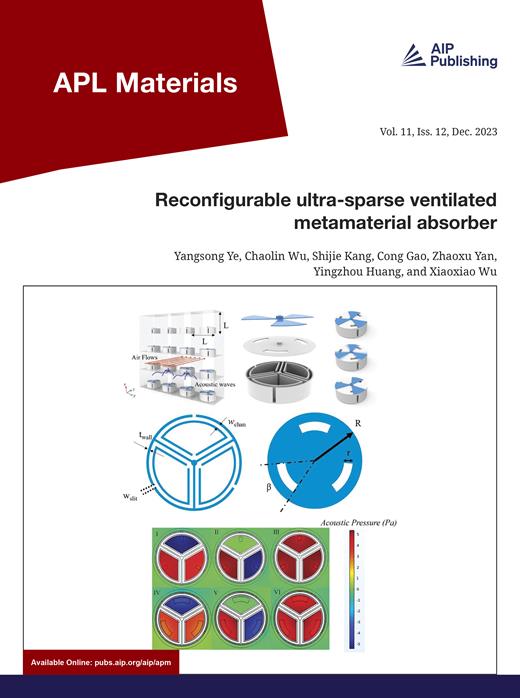Electric field enhancement of the superconducting spin-valve effect via strain-transfer across a ferromagnetic/ferroelectric interface
IF 5.3
2区 材料科学
Q2 MATERIALS SCIENCE, MULTIDISCIPLINARY
引用次数: 0
Abstract
In a ferromagnet/superconductor/ferromagnet (F/S/F) superconducting spin-valve (SSV), a change in the magnetization alignment of the two F layers modulates the critical temperature (Tc) of the S layer. The Tc-switching effect (the SSV effect) is based on the interplay between superconductivity and magnetism. The fast and large resistive switching associated with Tc-switching is suitable for nonvolatile cryogenic memory applications. However, the external magnetic field-based operation of SSVs is hindering their miniaturization, and therefore, electric field control of the SSV effect is desired. Here, we report epitaxial growth of a La0.67Ca0.33MnO3/YBa2Cu3O7/La0.67Ca0.33MnO3 SSV on a piezo-electric [Pb(Mg0.33Nb0.67)O3]0.7-[PbTiO3]0.3 (001) substrate and demonstrate electric field control of the SSV effect. Electric field-induced strain-transfer from the piezo-electric substrate increases the magnetization and Tc of the SSV and leads to an enhancement of the magnitude of Tc-switching. The results are promising for the development of magnetic-field-free superconducting spintronic devices, in which the S/F interaction is not only sensitive to the magnetization alignment but also to an applied electric field.通过铁磁/铁电界面上的应变传递实现超导自旋阀效应的电场增强
在铁磁体/超导体/铁磁体(F/S/F)超导自旋阀(SSV)中,两个 F 层磁化排列的变化会调节 S 层的临界温度(Tc)。Tc 开关效应(SSV 效应)基于超导和磁性之间的相互作用。与 Tc 开关相关的快速大电阻开关适用于非易失性低温存储器应用。然而,SSV 基于外部磁场的操作阻碍了其微型化,因此需要对 SSV 效应进行电场控制。在此,我们报告了 La0.67Ca0.33MnO3/YBa2Cu3O7/La0.67Ca0.33MnO3 SSV 在压电[Pb(Mg0.33Nb0.67)O3]0.7-[PbTiO3]0.3 (001) 衬底上的外延生长情况,并展示了 SSV 效应的电场控制。来自压电基底的电场诱导应变传递增加了 SSV 的磁化和 Tc,并导致 Tc 开关幅度的增强。这些结果对开发无磁场超导自旋电子器件大有希望,因为在无磁场超导自旋电子器件中,S/F相互作用不仅对磁化排列敏感,而且对外加电场也很敏感。
本文章由计算机程序翻译,如有差异,请以英文原文为准。
求助全文
约1分钟内获得全文
求助全文
来源期刊

APL Materials
NANOSCIENCE & NANOTECHNOLOGYMATERIALS SCIE-MATERIALS SCIENCE, MULTIDISCIPLINARY
CiteScore
9.60
自引率
3.30%
发文量
199
审稿时长
2 months
期刊介绍:
APL Materials features original, experimental research on significant topical issues within the field of materials science. In order to highlight research at the forefront of materials science, emphasis is given to the quality and timeliness of the work. The journal considers theory or calculation when the work is particularly timely and relevant to applications.
In addition to regular articles, the journal also publishes Special Topics, which report on cutting-edge areas in materials science, such as Perovskite Solar Cells, 2D Materials, and Beyond Lithium Ion Batteries.
 求助内容:
求助内容: 应助结果提醒方式:
应助结果提醒方式:


